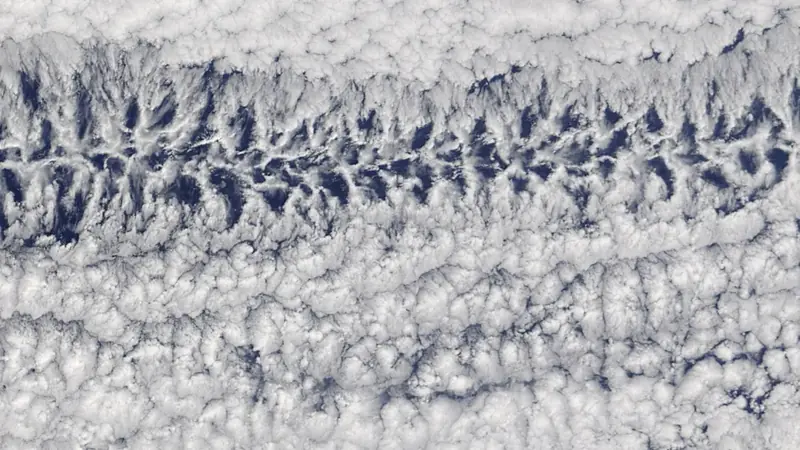Amazing satellite images reveal a gigantic, nearly perfect cloud circle that formed in the heart of the Pacific Ocean over a decade ago. While this type of cloud formation isn’t extraordinary, it’s incredibly rare to find it in such an isolated environment, experts say. According to NASA’s Earth Observatory, researchers discovered this unusual structure, which spans 450 kilometers, “thousands of kilometers southwest of the Hawaiian Islands.” They were aided by the Moderate Resolution Imaging Spectroradiometer (MODIS) aboard the Terra satellite. This fluffy ring consists of cumulus clouds that have formed what is known as a Rayleigh-Bénard convective cell. This meteorological phenomenon, referred to as convection, is caused by the rising and sinking of air that has been heated or cooled to different temperatures. The National Oceanic and Atmospheric Administration (NOAA) states that there are two types of cloud cells: closed, which occur when cold air sinks around their edges, leading to cloud formation in their centers; and open, which happen when cold air sinks in the center, causing clouds to form around their peripheries. The cloud ring captured in the satellite image was formed as a closed cell, Live Science reported.
Typically, cloud cells have a hexagonal shape and often appear alongside other cells of the same type, creating noticeable patterns in the sky.

According to scientists at the Earth Observatory, the isolated cloud ring emerged in the Pacific Ocean due to a flow of warm air over a small island or “patch” of water that had been overheated by the sun. “As the warm air became buoyant and rose, cumulus clouds likely formed, eventually leading to patches of light rain. The rain cooled the air beneath the clouds, causing a downward flow that directed the cooled, rain-laden air outward from the initial location of the clouds,” the Earth Observatory researchers explained. “When the cooled, rain-saturated air met the warmer air at the edge of the cell, it likely pushed the warm air upward, resulting in the formation of a ring of cumulus clouds,” they added.
The cloud cell is situated south of the Intertropical Convergence Zone (ITCZ)—a belt of low pressure near the equator where trade winds cause frequent thunderstorms and heavy rainfall. Scientists believe this may have also played a role in the formation of the cloud circle. The ocean surface to the east of the cloud ring (shown on the right in the image) has a metallic sheen. This is a result of sunlight reflecting off the sea and bouncing back to the observing space device. Documenting this phenomenon is extremely important for scientists. The fact is, until now, cloud cells had only been recorded since 1961. Their images were captured by NASA’s Television Infrared Observation Satellite 1 (TIROS-1)—the first full-scale meteorological satellite launched into space. Prior to this, complex patterns of cells typically went unnoticed by experts, as noted by the Earth Observatory.
